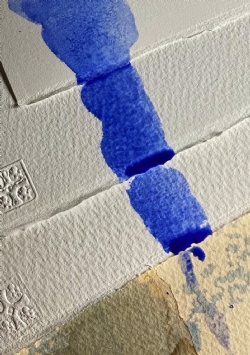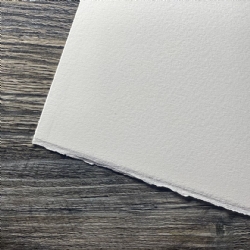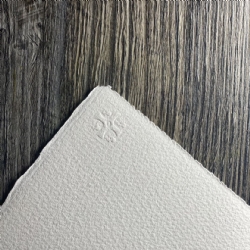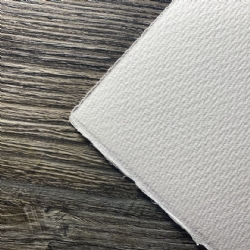St Cuthberts Mill Paper
Call or email:
+44 (0)1749 672015
sales@stcuthbertsmill.com
St Cuthberts Mill Paper
Watercolour
Printmaking
Digital Fine Art
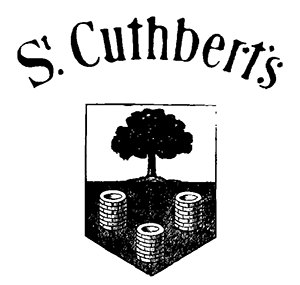
Watercolour Paper Surfaces
Ever wondered how the texture of watercolour paper is created?
At St Cuthberts Mill we use woollen felts to create the surface. The felts are created from sheep’s wool (wool is shaved from the animal as part of a sheep’s annual shearing, that is done once a year for the animal’s welfare, otherwise they are prone to disease and mobility issues because their coat grows to be too bulky). We are not expert sheep shearers at St Cuthberts Mill (just papermakers), instead we do buy in these felts from one of our trusted suppliers.
It is because of these woollen felts we cannot say Bockingford and Millford watercolour papers, or Somerset printmaking papers are vegan, despite there being no animal products in their ingredients. However, we can say there is no animal products in the recipe.
Why do we use woollen felts?
The simple answer is they create a beautiful texture. The texture that’s created by woollen felts is random. Nature does this well, and there are no regular patterns throwing your eye. A good watercolour paper should have a surface that enhances your artwork and does not detract from it. You could be staring at this surface for some time and the finished watercolour painting will show the surface.
In addition to the woollen felts used to create texture, our papermakers also use calender stacks to smooth out the surface. These are the heated rollers, where the ‘hot pressed’ papers take their name. However, they are not just reserved for the smooth papers.
Woollen felts are a wonderful thing, but their natural origins and the fact they wear out (sometimes in a matter of weeks) means our papermakers are constantly on their toes ensuring they are putting enough pressure with the marking felts, or removing texture with the heated rollers of the calender stacks, to ensure you the artist get the same texture every time we make a batch of paper.
To test the different paper surfaces are perfect, we rely on the human eye (and good lighting). The human eye is very sophisticated piece of equipment and nothing beats it for checking a papers surface. The human touch of our papermakers comes into play, they have to judge whether the surface is perfect, and if not make the adjustments on our paper machine.
What are the watercolour surfaces?
Well, there are three surfaces for watercolour paper. Choosing which one is good for you, depends on the type of painting you wish to do. There are three distinct surfaces of watercolour paper to aid an artist’s work.
HP -
This is also known as Hot Pressed.
This is the smoothest of the surfaces. At St Cuthberts Mill, our HP surface has a very fine ‘tooth’. This is only slight, but it does mean the paper is not glassy smooth like a Bristol surface. It is favoured by botanical artists, detailed work and any technique that would favour a smoother paper.
CP –
This is also known as Cold Pressed, and in the UK by the wonderful term ‘NOT’. A rather confusing expression that is actually an old papermaking term, meaning not ‘hot pressed’. The surface isn’t confusing though and is actually the most popular of all three. This is the medium surface for watercolour papers. It has lots of lovely peaks and troughs for the pigment to sit, but the surface isn’t too overpowering for finer work. As such it is used for a wide variety of painting styles.
Rough –
Its very name gives away its surface type. This is the most textured of the surfaces. Deep valleys and peaks to aid lots of lovely granulation. It is often chosen for landscapes, seascapes, and bold expressive work.
Before choosing your surface, think first about what your finished composition would most benefit from. Your paper is there to work with you.
To learn more about animal products in paper
https://www.stcuthbertsmill.com/advice-centre/?id=1004

